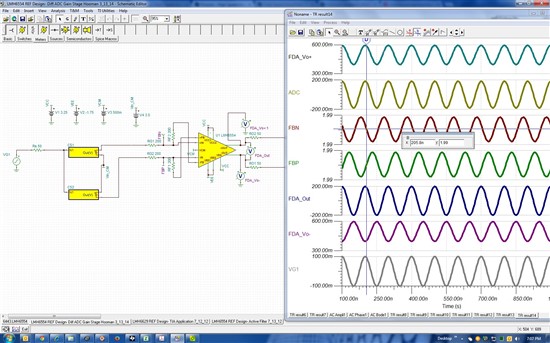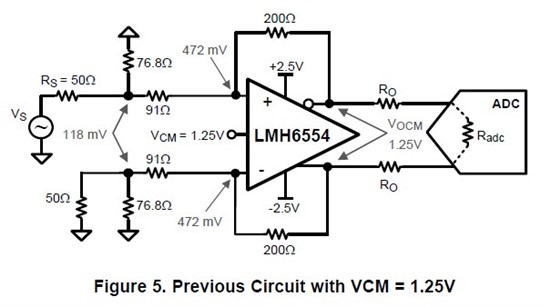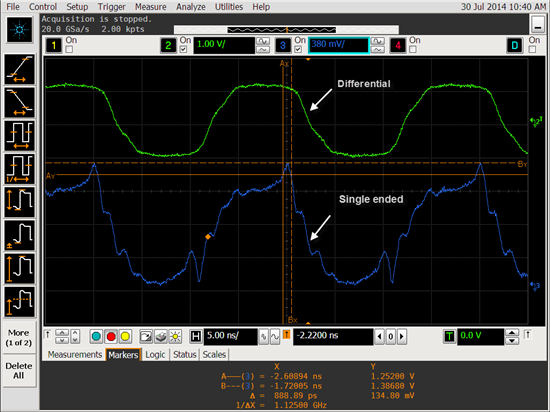Hi,
I'm working on a design consist of LMH6554 (ADC Driver) with ADC08D1000 (Ultra HS ADC). However, I realized that my signal is unable to maintain at true zero due to the offset from the feedback loop (Possible due to the VCM from ADC). Besides that, the signal is attenuated by half due to the RO resistor (50 ohms) in parrallel with the 100 ohms resistor within the ADC.
Can I know if it will be safe to remove the 50 ohms resistor without affecting the performance of the ADC?
Also, if I removed the VCM and let the ADC operated in AC-Coupled mode, will my performance of ADC be improved?
Thanks.










